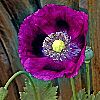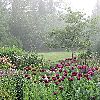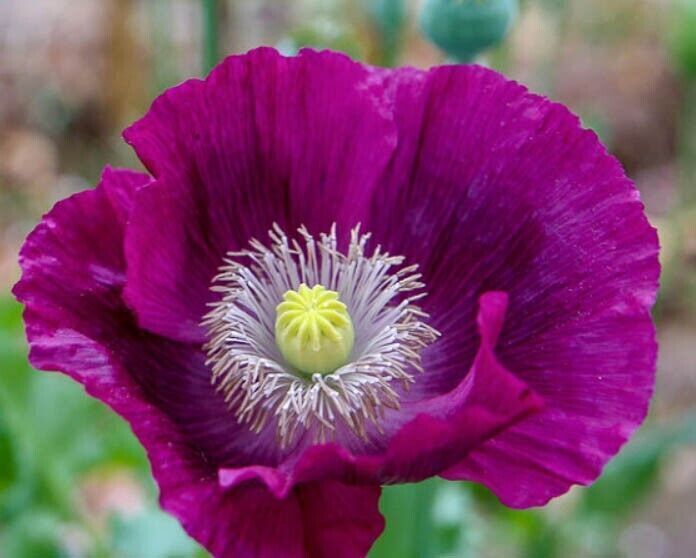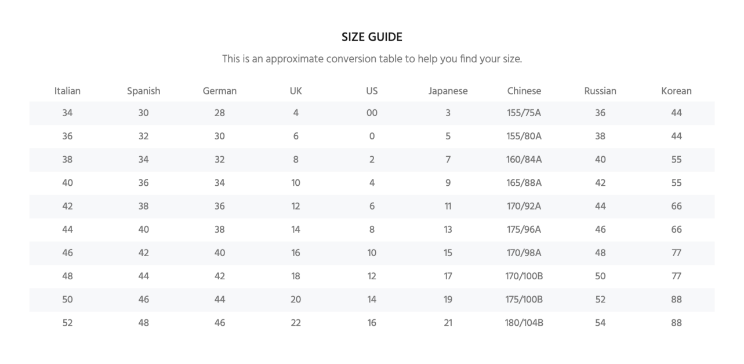Poppy LAUREN'S GRAPE Purple Attracts Bees Butterflies Non-GMO 500 Seeds
100% Pure Seed ? Non-GMO - Seeds need to be cold stratified for successful germination or planted in fall so they can go through a cold winter
PRODUCT INFORMATION
HOW TO GROW POPPIES
Planting Poppy Seeds
- PLANTING SEASON: Plant in Fall, Winter or Very Early Spring.
- SEED PREP: Requires Light and Cold Stratification
- SOWING METHOD: Direct Sow, Start Indoors
- LIGHT REQUIREMENT: Full Sun, Partial Shade
- PLANTING DEPTH: 1/16 inch
- PLANT HEIGHT: Up to 35 inches
- PLANT SPACING: 6 to 8 inches
- WATER NEEDS: Average
- HARDINESS ZONES: 3, 4, 5, 6, 7, 8, 9
Great Companion Plant: Celosia Cristata or Plume
FAQS
Cold Stratification Instructions
Cold Stratification provides dormant seeds a period of ripening in a cold, moist environment, which allows the seed to germinate when temperatures become warm.
Typically this period occurs over winter in temperate climates.
Cold stratification can be induced in the lab with the use of a refrigerator.
Instructions:
1. Prepare sand or vermiculite by adding enough water to thoroughly moisten it, but don?t add so much water that it puddles at the bottom of the container.
2. Label a plastic bag with the species name, lot number and date. Place about 1/2 cup of moistened sand or vermiculite in the bag and add the seed. Mix thoroughly.
3. Partially close the plastic bag to allow for some air flow. Place bag in a refrigerator. Ideally, the temperature should be 40 degrees Fahrenheit.
4. Check once or twice a week to make sure mixture stays moist. Add a little water if it is drying out. Do not add so much water that it puddles in the bottom of the bag. Keep in refrigerator for 4-8 weeks or for the amount of time indicated for the species.
5. Check seed mixture to make sure seeds are not germinating. If seeds have begun to germinate, plant immediately. Do not allow mixture to dry out.
6. Check seed mixture to make sure mold or fungus is not forming. If you see any, open the bag completely and dry down the mixture a bit so that it is not as wet. Do not dry out completely.
7.Remove from the refrigerator right before seeding. Seeds should not be allowed to dry out prior to planting. This may cause the seeds to go back into a dormant phase.
8. Do not allow the cold-stratified seeds to remain at room temperature for more than a few hours. This may cause mold to form in the mixture.
Additional Cold Stratifying Instructions
Everyone wants plants. Now. But there are a small group of seeds that require a special treatment before they will even germinate in a climate that has temperatures below freezing. This process is called ?Cold Stratification.? There are two ways to accomplish this.
Fall Planting
If time is not a problem, you can put them in the ground in fall and let them go through a winter. They will sprout next year, but not flower. The following year, having gone through two winters, they will return and bloom as expected.
If you are planting poppies direct sowing is recommended in late fall or early spring for zones 2-8
Create a "False Winter"
The second way to do this, if you want to save time, is to create a ?false winter.? What this does is trick the seeds into thinking they have been in the ground for an entire year. All they need is to be in your refrigerator for at least 2 ½ months.
About 3 months before spring, place seeds in a plastic bag with a handful of slightly dampened, clean peat, paper towel, or a mix of clean peat and sand.
Seal and label the bag with seed name and date, then store in the refrigerator (not freezer) for at least 2½ mos. before planting in spring. (The cold period mimics a full winter?s cold.)
Once your seed has been treated, it?s ready to plant when spring arrives.
Free shipping on all orders in the USA.
Our amazing support team is here to help. Text us at 678 316 0940 and get an instant response
Your Payment is Secure and So is your Purchase. Simply return it within 30 days for an exchange.
Grab a hosting plan for that small business or personal website. Fast Setup, great speeds, low prices. Managed Hosting Too.Text us at 678 316 0940
















